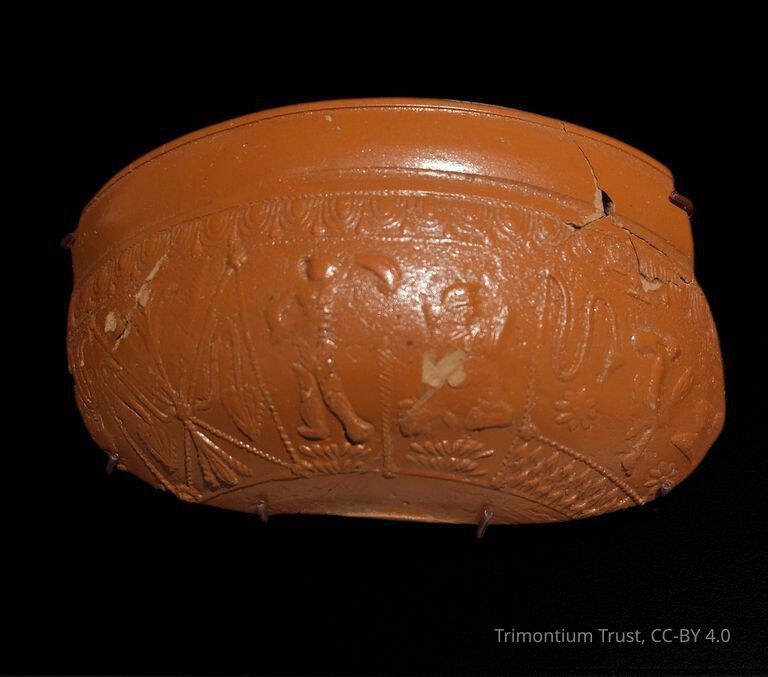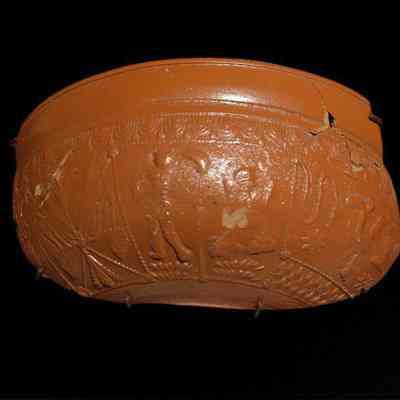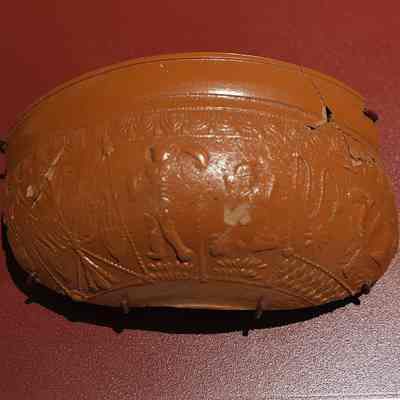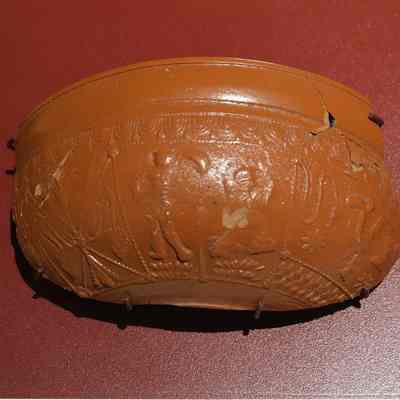Name/Title
Samian Ware BowlEntry/Object ID
L.2021.99Description
Fragment of a bowl of Samian ware with panels showing gladiators and a seated figure with lyre, from the Roman site at Newstead. 4 parts reconstructed.Use
Used to serve food or eat out of.Context
According James Curle's publication on the excavation at Newstead, this bowl fragment belongs to the Flavian Period and was found in the ditch of the early fort at Newstead.Collection
National Museums ScotlandCategory
Samian ware
Food Preparation & Storage
Acquisition
Accession
X.FRA 1260Source or Donor
National Museums ScotlandAcquisition Method
LoanMade/Created
Time Period
1st - 2nd centuryOther Names and Numbers
Other Numbers
Number Type
Previous Accession NumberOther Number
V.15.21Provenance
Provenance Detail
From the Roman Site at NewsteadExhibition
Permanent ExhibitionInterpretative Labels
Label Type
Exhibition CaptionLabel
These bowl pieces show one gladiator victorious over another. Trimontium had an amphitheatre, the most northerly yet identified in the Empire. It is possible that gladiators would have fought here to entertain the troops. It may also have been used for military displays, the execution of prisoners and holding wild animal fights.Research Notes
Research Type
ResearcherPerson
Rachel CartwrightDate
2/16/2023Notes
According James Curle's publication on the excavation at Newstead, this bowl fragment belongs to the Flavian Period and was found in the ditch of the early fort at Newstead. His description of the fragment is as follows: "Fragment of a bowl (Dragendorff 37). Egg and tassel moulding. Portions of three- panels remain. (1) The cruciform ornament. (2) A combat between gladiators. One of them a Thrax stands in the attitude of victory. His small shield is raised albft in his left hand, in his right he bears his short sword. Both his legs are protected by ocreae. On the ground beneath are tufts of herbage. His adversary, fallen on his knee, holds up his left hand in an appeal for mercy. A twisted stem rising from the ground separates the two figures. The impressions are worn and poor. (3) Panel with tendril at the angle. The seated figure with a lyre doubtless represents Apollo. Below, three rows of arrow-points." (Curle, 1911: 207-8)



